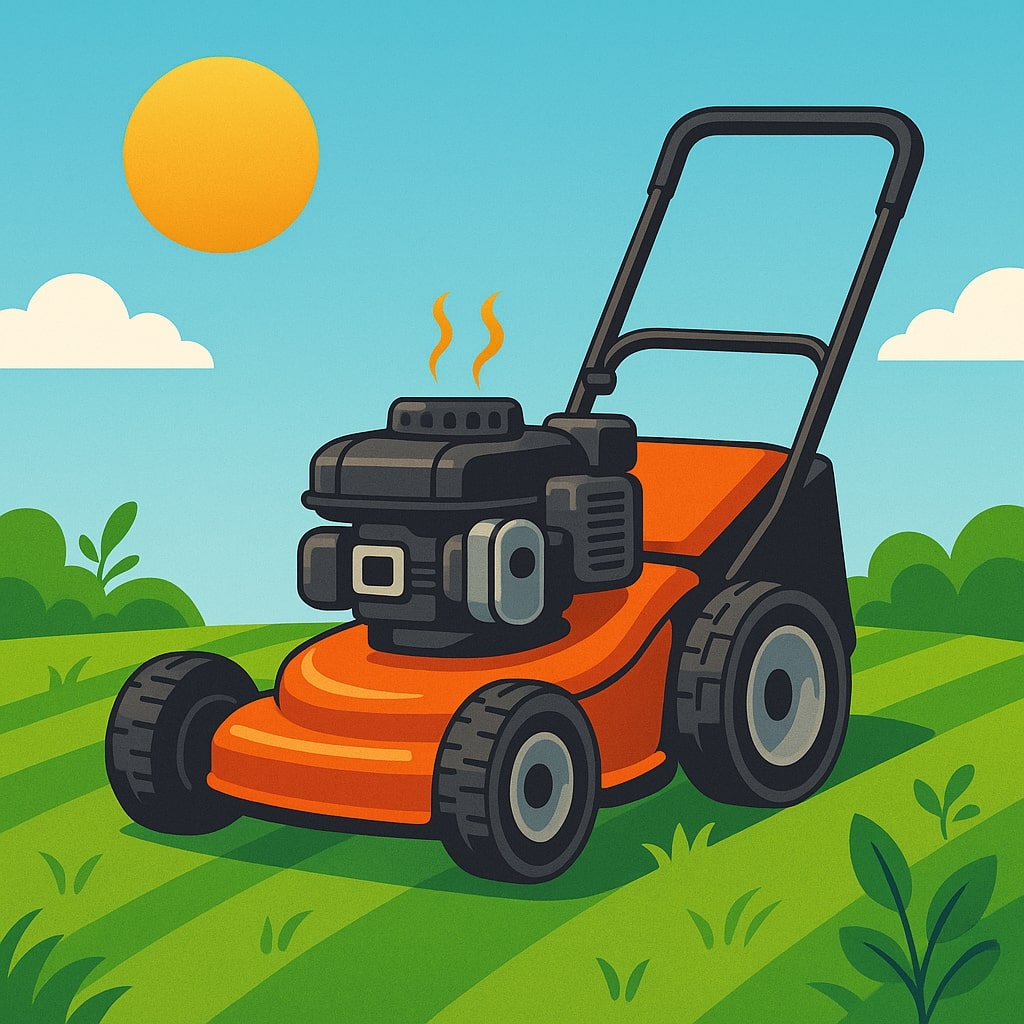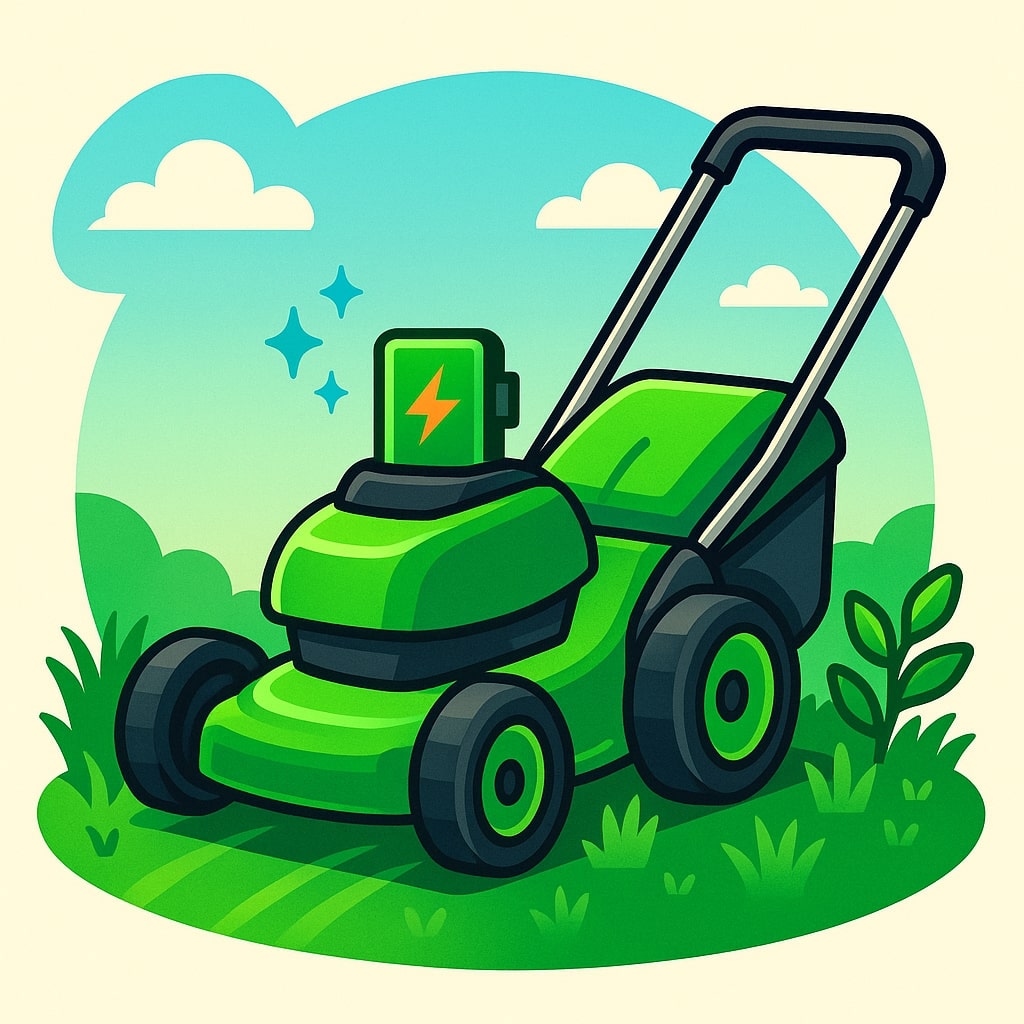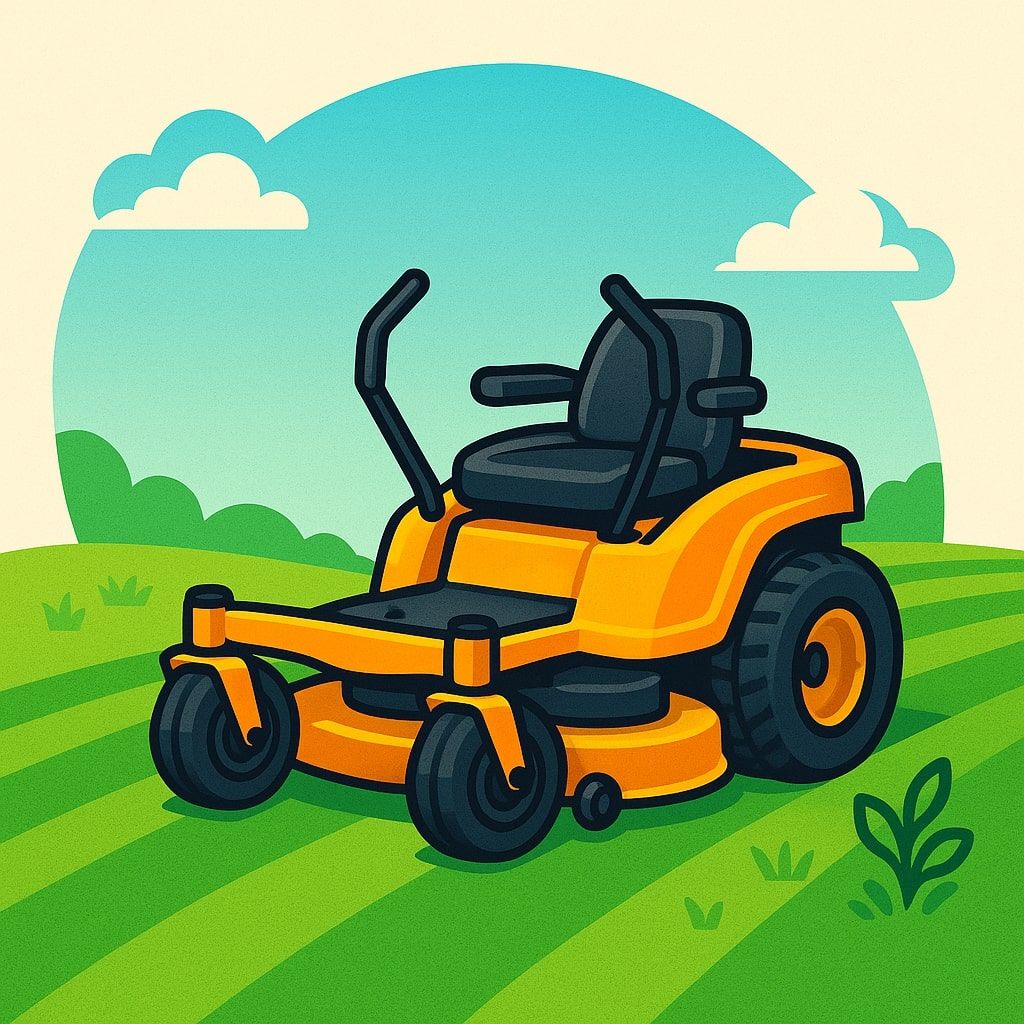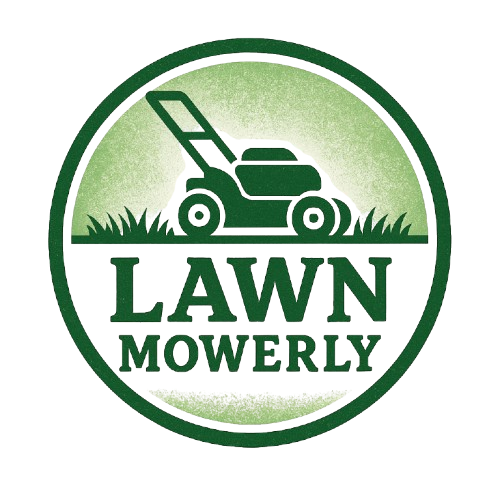
Most homeowners focus on mower type, blade sharpness, fuel, or even mowing patterns — but the time of day you mow can quietly make or break the look and health of your lawn. Focus on best times to mow
Mowing at the wrong hour can lead to torn grass blades, brown tips, stressed turf, clumping, fungal problems, and even extra fuel or battery usage.
But mowing at the right time?
That’s when you get those crispy-clean cuts, deep green color, smoother stripes, and a lawn that actually grows healthier after every mow.
Grass responds differently depending on moisture, temperature, and sunlight. Cut it when the blades are too wet, too cold, or too hot, and you force your lawn into stress mode.
But mow it when conditions are stable, dry, and cool, and your lawn recovers faster — leaving you with a noticeably cleaner finish and a more efficient mowing session.
In this guide, you’ll learn:
- The best and worst times of day to mow
- How temperature, dew, weather, and grass type change the ideal window
- Why morning vs afternoon mowing leads to completely different results
- Seasonal time adjustments (spring, summer, fall)
- Expert tips to get the cleanest possible cut every time
By the end, you’ll know exactly when to mow so your lawn looks healthier, your cut quality improves, and your mower works with less effort — all by simply choosing the right time of day.
Quick Summary Chart
| Time of Day | Is It Good? | Why / Why Not |
|---|---|---|
| Early Morning (6–8 AM) | ❌ Bad | Dew makes grass wet → tearing, clumping, fungus |
| Late Morning (8–10 AM) | ⭐ Best | Grass dry, cool temps, less stress |
| Midday (10 AM–2 PM) | ⚠️ Okay/Not Ideal | Heat stress → burnt tips |
| Late Afternoon (4–6 PM) | ⭐ Best | Cooler temps, dry grass, smoother cuts |
| Evening (6–8 PM) | ❌ Bad | Grass stays moist overnight → disease |
The Science Behind the Best Time to Mow
Most people think mowing is simple: fuel up, start the mower, and go. But turfgrass science says otherwise.
Here’s the deeper science behind why timing matters.
⭐ Grass Physiology: Why Dry, Stable Blades Cut Cleaner
Grass blades contain water-filled cells that stay firm when temperatures are mild and moisture is balanced. When the blade is fully hydrated but not wet (typically late morning or late afternoon), the cell walls are strong enough to be cut cleanly.
But outside these windows:
Dew softens the blade’s outer tissue. When you mow, the blade bends instead of standing upright, causing:
Under high heat (85–95°F common in U.S. summers), the blade loses water rapidly (transpiration). This makes the leaf blade limp → it tears instead of slicing cleanly.
Late afternoon provides ideal conditions for mowing when dew has evaporated but temperatures are cooling down.
As temperatures cool and moisture levels stabilize, evening mowing can provide good results with proper timing.
⭐ Moisture & Evaporation: Why Wet Grass Is the #1 Mowing Enemy
U.S. turfgrass researchers agree: Wet grass = bad mowing.
⭐ Why late morning & late afternoon work best
By 8–10 AM, sunlight and mild warmth have dried the surface — but the day isn’t hot enough to stress the grass. Late afternoon offers the same advantage.
⭐ Heat Stress: Why Midday Mowing Damages the Lawn
During the middle of the day, turfgrass enters self-defense mode.
To survive heat, the plant:
- Closes its stomata (tiny pores)
- Stops photosynthesis temporarily
- Limits internal water movement
- Becomes more brittle
Cutting during this time causes:
- Browning at the tips
- Slow recovery
- Extra stress on cool-season grasses (Kentucky bluegrass, fescue, rye)
- Difficulty maintaining clean stripes
Warm-season grasses (Bermuda, Zoysia, St. Augustine) handle heat better but still show duller color when cut at peak temperatures.
⭐ Blade Hydration: Why It Influences Cut Quality
- The blade stands upright
- The cut is cleaner
- Less tissue is damaged
- Temperatures are moderate (60–80°F)
- The grass has dried from dew
- The soil moisture is balanced
This is why late morning (8–10 AM) and late afternoon (4–6 PM) windows provide optimal blade hydration and firmness.
- The blade wilts
- Cuts look dull
- Grass becomes more prone to disease and heat shock
⭐ Fungal Growth Risks: Why Evening Mowing Is One of the Worst Times
When you mow late in the evening (6–8 PM):
- Grass is slightly wet from cooling air
- Mow wounds remain fresh overnight
- Turf doesn’t get sunlight to dry or heal
- Moisture sits on cut surfaces for 10–12 hours
- Soil cools → fungal spores activate
This creates a high risk for lawn diseases, especially in humid U.S. states (Florida, Texas, Georgia, Carolinas).
Fresh mowing wounds + darkness + moisture = perfect storm for fungal outbreaks.
Deep Dive Into Each Time Slot
Seasonal Adjustments: When to Mow in Each Season
Even in the same yard, the best time of day and best mowing habits shift dramatically by season. Temperature swings, soil moisture, and grass-growth patterns all influence what your lawn can handle. Below is a season-by-season breakdown designed specifically for U.S. homeowners (cool-season + warm-season regions).
🌱 Spring (March–May)
- Never mow on saturated ground. Spring soil stays soft longer — you’ll leave ruts that last all season.
- Follow the 1/3 rule strictly. Grass growth is explosive; cutting too much at once scalps the lawn.
- Bag if the grass is too tall. Spring clumps can smother the turf if left on top.
☀️ Summer (June–August)
🍂 Fall (September–November)
❄️ Winter (Cool-Season Zones Only)
- Do NOT mow during frost or when ground is frozen.
- Do NOT mow on snow-covered grass.
- Keep mower height high — winter cuts should be gentle.
Why Weather Conditions Change the Best Time to Mow
1. Wet or Dewy Grass
- Wet leaves bend instead of standing upright.
- The mower blade rips and shreds instead of slicing cleanly.
- Results in frayed tips → brown edges → higher disease risk.
- Shoes lose traction on wet slopes or soft turf.
- Mower wheels can slide, especially on hills or clay-based soils.
- Dangerous on riding mowers or zero-turns with poor grip when wet.
- Moist clippings stick together in heavy, soggy piles.
- These clumps smother the lawn, attract insects, and encourage fungal spots.
- Mulching becomes impossible; you end up bagging more.
2. Extreme Heat
- Freshly cut grass loses moisture faster.
- Heat + a fresh wound = severe stress.
- Cool-season grasses (Kentucky bluegrass, fescues, ryegrass) are especially sensitive and can literally go dormant overnight after a hot cut.
- Engines run hotter and may bog down during thick summertime growth.
- You exhaust faster, lose focus, and dehydrate more easily.
- Heat-stressed lawns look scalped even at normal cutting heights.
3. High Humidity
- Dew lingers longer on humid mornings.
- Freshly irrigated or rained-on lawns take much longer to dry.
- Even if surface looks dry, lower canopy may stay damp.
- Mowing creates thousands of tiny wounds on blades.
- High humidity + open wounds = ideal for pathogens like dollar spot, brown patch, and leaf spot.
- This is why humid states (Florida, Louisiana, Texas Gulf, Carolinas) prefer afternoon mowing windows.
4. Windy Days
- Mulched clippings scatter unevenly.
- Bagged clippings can blow out of chute.
- Harder to control stripe patterns or mow clean edges.
- Cleanup becomes a chore — clippings end up on driveways, walkways, and flowerbeds.
Mowing Height & Frequency Based on Time of Day
Seasonal Height Guide
Time of Day Analysis
Mowing Frequency by Schedule
Best Time to Mow Based on Grass Type
Different grass types respond to heat, sunlight, and moisture differently. That means the best time of day to mow changes depending on whether you have cool-season or warm-season turf — a major factor across U.S. lawns.
Cool-Season Grasses
Cool-season grasses hate heat stress. Cutting them too early (wet) or too late (hot) leads to:
- Torn leaf tips
- Browning/heat stress
- Higher fungus risk (especially for ryegrass and bluegrass)
Warm-Season Grasses
Warm-season grasses handle hot temperatures well, but cutting them at midday can still cause:
- Burned edges
- Moisture loss
- Stress lines or scalping (especially Bermuda)
| Feature | Cool-Season Grasses | Warm-Season Grasses |
|---|---|---|
| Best Mowing Time | Late Morning (10 AM–12 PM) | Late Afternoon (4–6 PM) |
| Optimal Temperature | 60–75°F | 80–95°F |
| Key Concern | Heat stress | Sunscald |
| Recovery Time | Faster in mild weather | Better with overnight recovery |
Best Day of the Week & Frequency
Timing isn’t just about the hour — the day of the week and how often you mow also affect lawn health, mowing quality, and mower performance. Here’s what U.S. homeowners should know.
🌧️ Avoid Mowing Right Before Rain
Mowing right before a rainfall creates several problems:
- Freshly cut grass blades are more vulnerable to fungus when rain hits.
- Rain pushes clippings into clumps and thatch, suffocating the lawn.
- Wet soil compacts faster, reducing root growth.
Rule:
If rain is expected within 2–4 hours, reschedule.
🌧️ Avoid Mowing Wet Grass After Rain
Wet grass causes more issues than almost anything else:
- Clumps that mat down and suffocate turf
- Slipping hazards
- Tears instead of clean cuts
- Clogged mowers (gas, electric, and ZTRs)
- Deep ruts in soft soil
Wait until the lawn is fully dry — often 24–48 hours after heavy rain, depending on region and soil type.
📆 Ideal Mowing Frequency by Season
Best Day of the Week to Mow
- Grass has time to recover before weekend activities
- Less competition for neighborhood noise
- Weather is more predictable mid-week
- Lawn looks best by Saturday/Sunday
- Lawns mowed only once a week tend to grow too tall → more stress
- You may hit the worst weather crowds (many people water lawns on weekends)
- Morning dew tends to linger longer on weekends depending on routines
Weekday vs Weekend Differences (Quick Breakdown)
| Factor | Weekday Mowing | Weekend Mowing |
|---|---|---|
| Weather Predictability | Better | Often worse (crowded time) |
| Cut Quality | Higher | Depends on weekend moisture |
| Grass Height Control | More consistent | Often too tall by Saturday |
| Lawn Appearance | Best by weekend | Best early-week |
| Flexibility | More options | Limited to a 1–2 day window |
How Mowing Time Affects Mower Performance
⛽ Gas Mowers (Walk-Behind & Self-Propelled)

Gas engines are powerful, but they have a major weakness: wet or damp grass.
🔋 Electric & Battery Mowers

Electric mowers are extremely common in U.S. suburbs, but mowing time affects them even more.
🏎️ Zero-Turn Mowers

Zero-turn mowers (ZTRs) are strong, fast, and built for larger yards — but mowing time still matters.
⭐ Conclusion & Final Takeaways
Choosing when you mow is one of the simplest changes that can dramatically improve how your lawn looks, grows, and recovers. After breaking down every time window, the science behind blade health, and how weather and region affect cut quality, here’s the clear takeaway:
⭐ Best Times to Mow (At a Glance)
- Late Morning (8–10 AM) — Hands-down the best window. Grass is dry, temperatures are mild, blades are firm, and the lawn recovers fast.
- Late Afternoon (4–6 PM) — A great second choice. Heat has eased, the turf is stable, and you still have daylight for healing—just avoid humid evenings.
- Midday (10 AM–2 PM) — Not ideal. Heat stress leads to tearing, browning, and slower recovery.
- Early Morning (6–8 AM) — Poor window. Dew-covered turf tears, clumps, and increases fungal risk.
- Evening (6–8 PM) — Worst overall. Grass stays wet overnight, making it highly vulnerable to disease.
⭐ Adjust Based on Season, Weather, and Grass Type
Timing should shift a bit depending on conditions:
🌿 By Season
- Spring: Mid/late morning (after dew evaporates).
- Summer: Late afternoon to avoid heat stress; raise your mowing height.
- Fall: Late morning again as humidity decreases and growth slows.
- Winter: Avoid mowing frozen or frosty grass entirely.
🌦️ By Weather
- Skip mowing if grass is wet, dew-heavy, freshly irrigated, or wilted from heat.
- Don’t mow before or after storms — clumping and tearing increase dramatically.
- Watch nighttime humidity in the Southeast; avoid late-afternoon mowing if nights stay damp.
🌾 By Grass Type
- Cool-season lawns (Fescue, Bluegrass, Ryegrass): Prefer cooler morning windows.
- Warm-season lawns (Bermuda, Zoysia, St. Augustine): Handle warmth better but still don’t tolerate midday cutting.
Every lawn in the U.S. behaves a little differently — and matching your mowing time to your turf’s conditions is one of the easiest ways to get healthier, more resilient grass.
Final Word
Follow these mowing windows consistently, pay attention to moisture and heat, and adjust for your climate — and you’ll see an immediate difference. Cleaner cuts. Richer color. Fewer disease issues. And a lawn that looks sharper and healthier after every mow.
“Follow these mowing times and watch your lawn instantly look sharper, healthier, and cleaner.”

I’m David man behind Lawn Mowerly; I’ve been dealing with lawnmowers and Tractors with my father since I was a kid. I know every make and model and what each one is capable of and love helping people find the perfect equipment for their needs.
